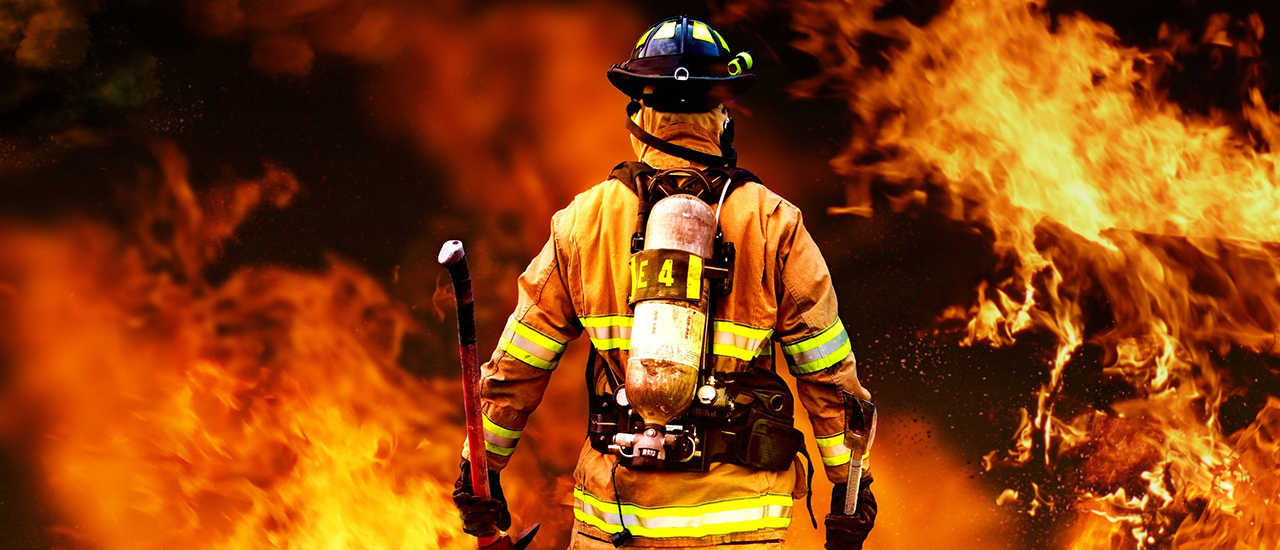As a manufacturer of heat and fire resistant NFPA compliant fasteners, YKK understands the importance of taking preventative measures to protect firefighters. We thought you might find the following articles to be helpful in terms of identifying potential hazards and protecting firefighters.
In the article, “How to conduct a firefighter PPE risk assessment, “ written by Robert Avsec, it states that one of the key factors in reducing on-scene risks to fire department personnel is personal protective equipment (PPE). However, before fire department leaders select the PPE for their personnel, they should conduct a risk assessment to ensure that the gear they select is the right gear for the job.
The article goes on to say that when a fire department conducts a systematic risk assessment to select the right PPE for its personnel, it needs to identify the particular hazards that its personnel may encounter in the course of their duties. The fire department would then describe the appropriate levels of personnel protection necessary for the firefighter to operate safely, effectively and efficiently when those hazards may be present.
How to conduct a firefighter PPE risk assessment
Most firefighters and officer should be informed and educated about what a risk assessment is and why it’s a vital component in making emergency operations safer, more effective and more efficient. Conducting a risk assessment forces the incident commander to identify the risks to civilians and firefighters, prioritize those risks and develop an incident action plan that addresses those risks as part of the overall incident management strategy.
According to the Canadian Centre for Occupational Health and Safety (CCOHS) website, there are several potential long term health effects that can result from being a firefighter including:
- Cancer, particularly genitourinary (including kidney, ureter and bladder);
- Back injuries and other strains caused by overexertion and strenuous work;
- Diseases such as AIDS and hepatitis caused by exposure to blood borne diseases; and
- Cardiovascular disease due to a multitude of toxic substances when fighting a fire. For example, carbon monoxide exposure is directly linked with cardiac toxicity.
To avoid some of these health and safety hazards associated with firefighting, the CCOHS recommends taking some preventative measures such as:
- Washing hands to reduce the chance of developing infections;
- Learning about and using the correct routine practices to prevent blood borne pathogen infection;
- Always using the correct personal protective equipment (PPE); and
- Learning safe lifting techniques
(none)
What should I know before reading about this occupation? What, briefly, does a fire fighter do? What are some health and safety hazards associated with being a fire fighter?
The article, “Firefighter Hazards/Love To Know,” by Charlotte Gerber, mentions further preventative measures that should be taken to protect fire fighter including:
- Using the right equipment when using ladders, including a ladder hook;
- Wearing all of the right protective equipment every time;
- Always wearing the right restraining devices;
- Wearing the right protective clothing for the hazard;
- Using personal alert systems during a rescue;
- Rotating firefighters to prevent them from becoming overexerted; and
- Seeking counseling when needed after a rescue to deal with any psychosocial hazards.
(This Article Is Not Available)
Finally, the article, “Hazmat basics: 10 straightforward answers for firefighter response,” by Jim Spell, mentions that in addition to the typical fire department call, a hazmat response has become another critical incident category for the fire service.
The article says that the successful resolution of a hazmat incident involves using the right equipment and educating and training firefighters to use the equipment effectively. In the case of a mid-size hazmat incident, the fire department will be tasked with identifying the hazardous materials, rescuing people and emergency decontamination. During an incident, firefighters must use the right personal protective equipment before and during exposure to hazardous materials and throughout the decontamination process.
Hazmat basics: 10 straightforward answers for firefighter response
By necessity and, like the early days of emergency medicine, a hazardous materials or hazmat response has become another critical incident category for the fire service. Like other fire department disciplines, a hazmat crisis requires a measured, deliberate and intensive approach.
As a brand leader for firefighter solutions, YKK conducts tests on our heat and fire resistant NFPA compliant zippers, snaps, and closures including our brass with polyester and brass with NOMEX® tape zippers.


